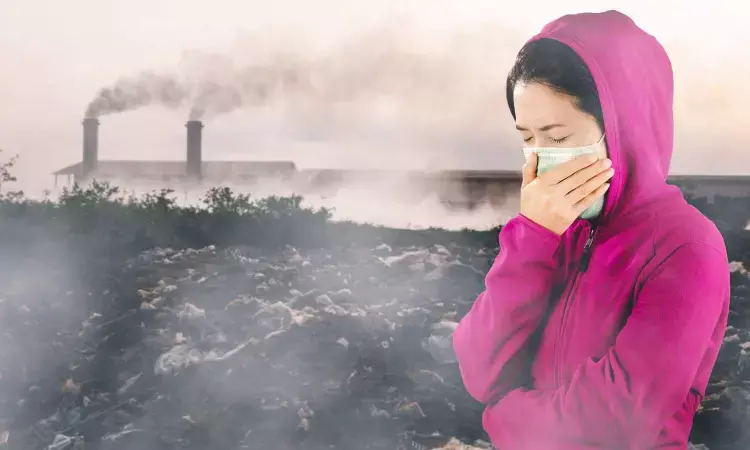- Home
- Medical news & Guidelines
- Anesthesiology
- Cardiology and CTVS
- Critical Care
- Dentistry
- Dermatology
- Diabetes and Endocrinology
- ENT
- Gastroenterology
- Medicine
- Nephrology
- Neurology
- Obstretics-Gynaecology
- Oncology
- Ophthalmology
- Orthopaedics
- Pediatrics-Neonatology
- Psychiatry
- Pulmonology
- Radiology
- Surgery
- Urology
- Laboratory Medicine
- Diet
- Nursing
- Paramedical
- Physiotherapy
- Health news
- Fact Check
- Bone Health Fact Check
- Brain Health Fact Check
- Cancer Related Fact Check
- Child Care Fact Check
- Dental and oral health fact check
- Diabetes and metabolic health fact check
- Diet and Nutrition Fact Check
- Eye and ENT Care Fact Check
- Fitness fact check
- Gut health fact check
- Heart health fact check
- Kidney health fact check
- Medical education fact check
- Men's health fact check
- Respiratory fact check
- Skin and hair care fact check
- Vaccine and Immunization fact check
- Women's health fact check
- AYUSH
- State News
- Andaman and Nicobar Islands
- Andhra Pradesh
- Arunachal Pradesh
- Assam
- Bihar
- Chandigarh
- Chattisgarh
- Dadra and Nagar Haveli
- Daman and Diu
- Delhi
- Goa
- Gujarat
- Haryana
- Himachal Pradesh
- Jammu & Kashmir
- Jharkhand
- Karnataka
- Kerala
- Ladakh
- Lakshadweep
- Madhya Pradesh
- Maharashtra
- Manipur
- Meghalaya
- Mizoram
- Nagaland
- Odisha
- Puducherry
- Punjab
- Rajasthan
- Sikkim
- Tamil Nadu
- Telangana
- Tripura
- Uttar Pradesh
- Uttrakhand
- West Bengal
- Medical Education
- Industry
Toxic chemicals from car exhaust, smoking and grilling increase risk of Rheumatoid Arthritis

A new study by Chris D'Adamo and his team found that toxic chemicals from car exhaust, smoking and backyard grills can increase the risk of developing rheumatoid arthritis (RA), an autoimmune disease. The findings of this study were published in BMJ Open.
These chemicals are called polycyclic aromatic hydrocarbons (PAHs). They are produced when coal, oil, gas, wood, and tobacco are burned. Grilling meat and other foods over an open fire also contributes to the production of PAHs.
Rheumatoid arthritis is an autoimmune and inflammatory disease that primarily affects joints, causing tissue damage and long-term pain. Joints can become deformed and patients may feel unsteady underfoot. Women are more likely than men to develop rheumatoid arthritis. The cause is unknown, but environmental factors such as genes, gender, age, smoking, diet, and lifestyle are thought to be involved.
For the study, the researchers used data from the US National Health and Nutrition Examination Survey, which surveyed about 22,000 adults between 2007 and 2016. Over 1,400 had rheumatoid arthritis. Blood and urine samples were tested to determine her levels of PAHs and other chemicals in her body. The 25% of people with the highest PAH levels were most likely to develop rheumatoid arthritis, regardless of whether they were former or current smokers. Taking into account dietary fiber, physical activity, smoking, income, education, age, sex, and weight, having PAHs (i.e., 1-hydroxynaphthalene) was strongly associated with a higher risk of developing rheumatoid arthritis (80%). I was.
Blood and urine samples taken from about 22,000 adults found that those with the highest PAH levels were at the highest risk of developing rheumatoid arthritis. Increased RA prevalence was observed in participants with the highest quartile of her PAH for a variety of individuals, whereas in the fully fitted model he remained associated only with 1-hydroxynaphthalene . In a perfectly fitted model, PAH body load was found to be associated with RA. Interestingly, smoking was not associated with RA after considering the physical burden of PAH. A mediation analysis showed that PAH body burden accounted for 90% of the overall effect of smoking on RA. PHTHTE and VOC metabolites were not associated with RA in the perfect fit model.
Reference:
Beidelschies, M., Lopez, R., Pizzorno, J., Le, P., Rothberg, M. B., Husni, M. E., & D’Adamo, C. (2023). Polycyclic aromatic hydrocarbons and risk of rheumatoid arthritis: a cross-sectional analysis of the National Health and Nutrition Examination Survey, 2007–2016. In BMJ Open (Vol. 13, Issue 5, p. e071514). BMJ. https://doi.org/10.1136/bmjopen-2022-071514
Neuroscience Masters graduate
Jacinthlyn Sylvia, a Neuroscience Master's graduate from Chennai has worked extensively in deciphering the neurobiology of cognition and motor control in aging. She also has spread-out exposure to Neurosurgery from her Bachelor’s. She is currently involved in active Neuro-Oncology research. She is an upcoming neuroscientist with a fiery passion for writing. Her news cover at Medical Dialogues feature recent discoveries and updates from the healthcare and biomedical research fields. She can be reached at editorial@medicaldialogues.in
Dr Kamal Kant Kohli-MBBS, DTCD- a chest specialist with more than 30 years of practice and a flair for writing clinical articles, Dr Kamal Kant Kohli joined Medical Dialogues as a Chief Editor of Medical News. Besides writing articles, as an editor, he proofreads and verifies all the medical content published on Medical Dialogues including those coming from journals, studies,medical conferences,guidelines etc. Email: drkohli@medicaldialogues.in. Contact no. 011-43720751


